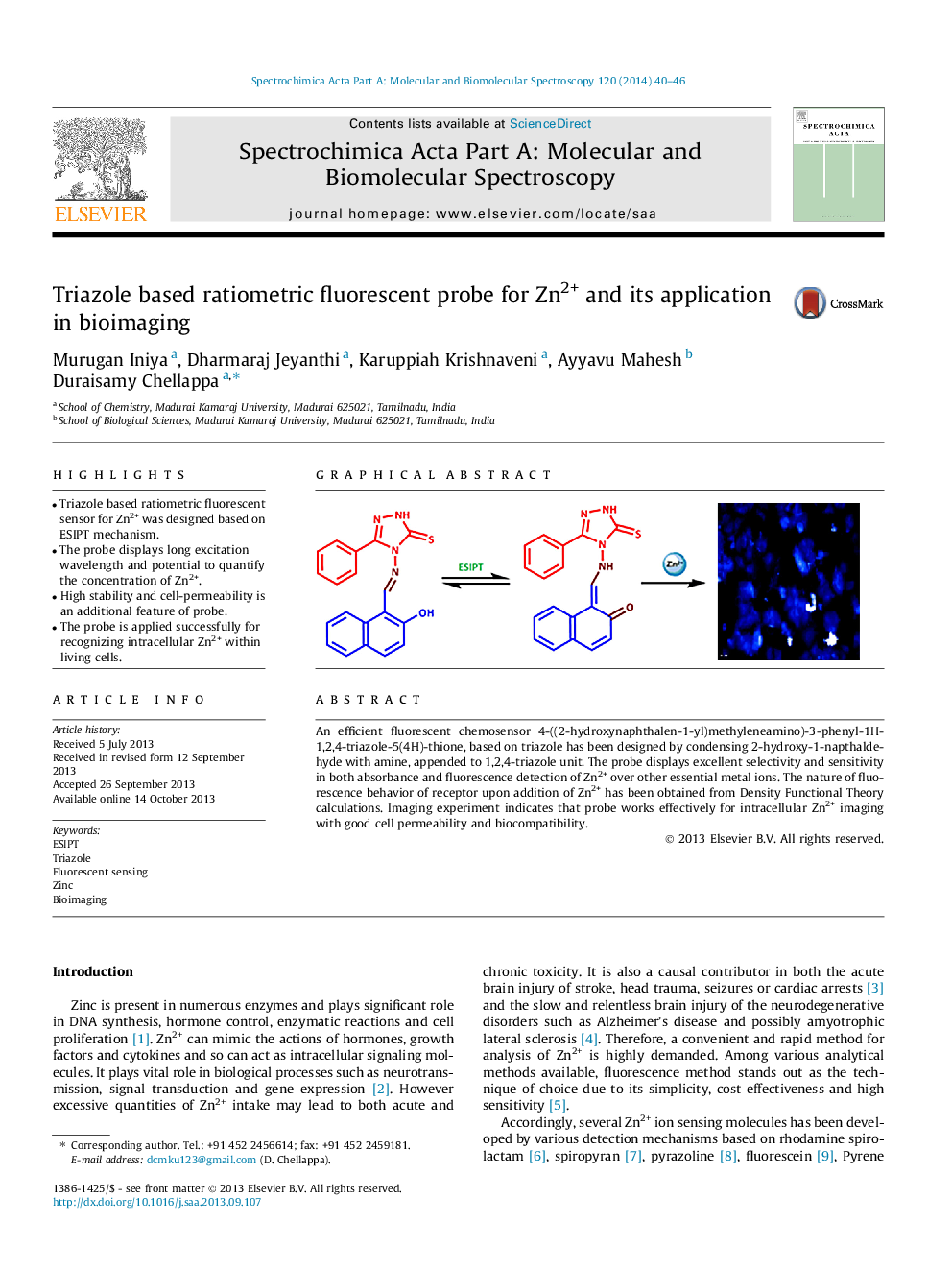| Article ID | Journal | Published Year | Pages | File Type |
|---|---|---|---|---|
| 1230821 | Spectrochimica Acta Part A: Molecular and Biomolecular Spectroscopy | 2014 | 7 Pages |
•Triazole based ratiometric fluorescent sensor for Zn2+ was designed based on ESIPT mechanism.•The probe displays long excitation wavelength and potential to quantify the concentration of Zn2+.•High stability and cell-permeability is an additional feature of probe.•The probe is applied successfully for recognizing intracellular Zn2+ within living cells.
An efficient fluorescent chemosensor 4-((2-hydroxynaphthalen-1-yl)methyleneamino)-3-phenyl-1H-1,2,4-triazole-5(4H)-thione, based on triazole has been designed by condensing 2-hydroxy-1-napthaldehyde with amine, appended to 1,2,4-triazole unit. The probe displays excellent selectivity and sensitivity in both absorbance and fluorescence detection of Zn2+ over other essential metal ions. The nature of fluorescence behavior of receptor upon addition of Zn2+ has been obtained from Density Functional Theory calculations. Imaging experiment indicates that probe works effectively for intracellular Zn2+ imaging with good cell permeability and biocompatibility.
Graphical abstractFigure optionsDownload full-size imageDownload as PowerPoint slide
